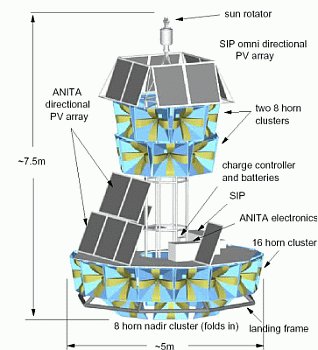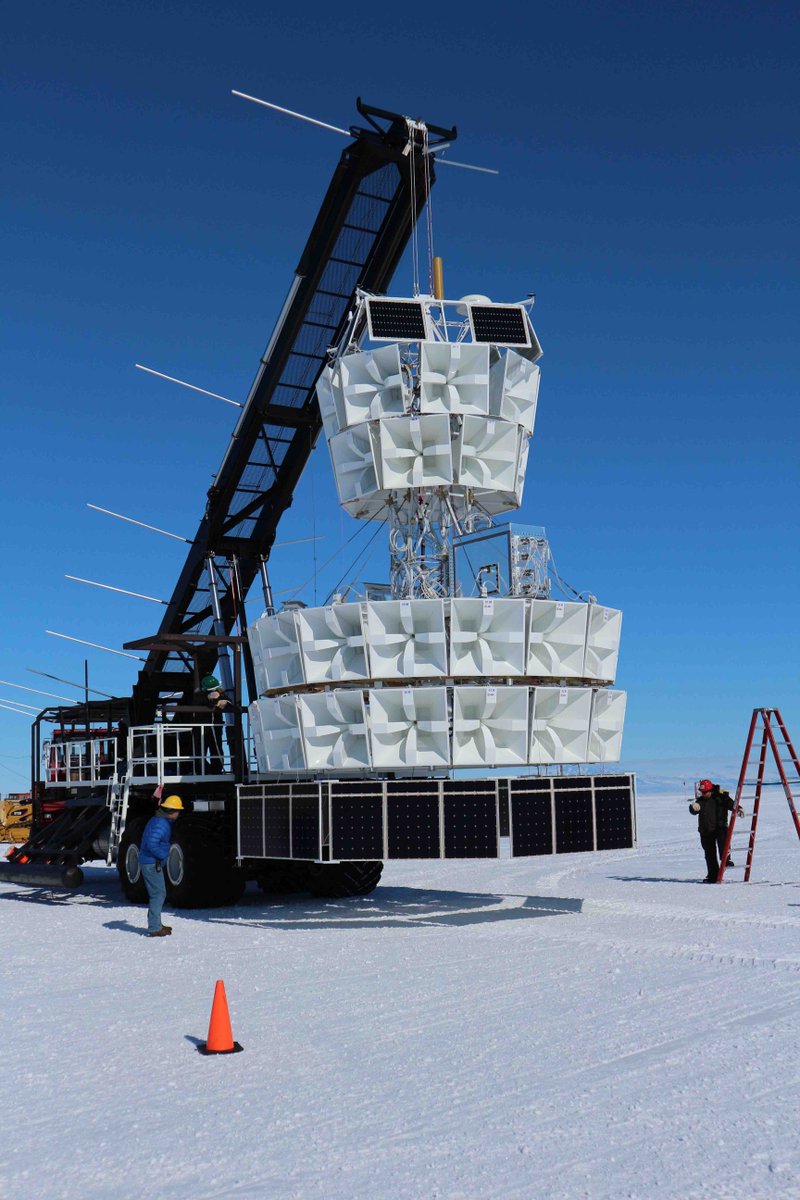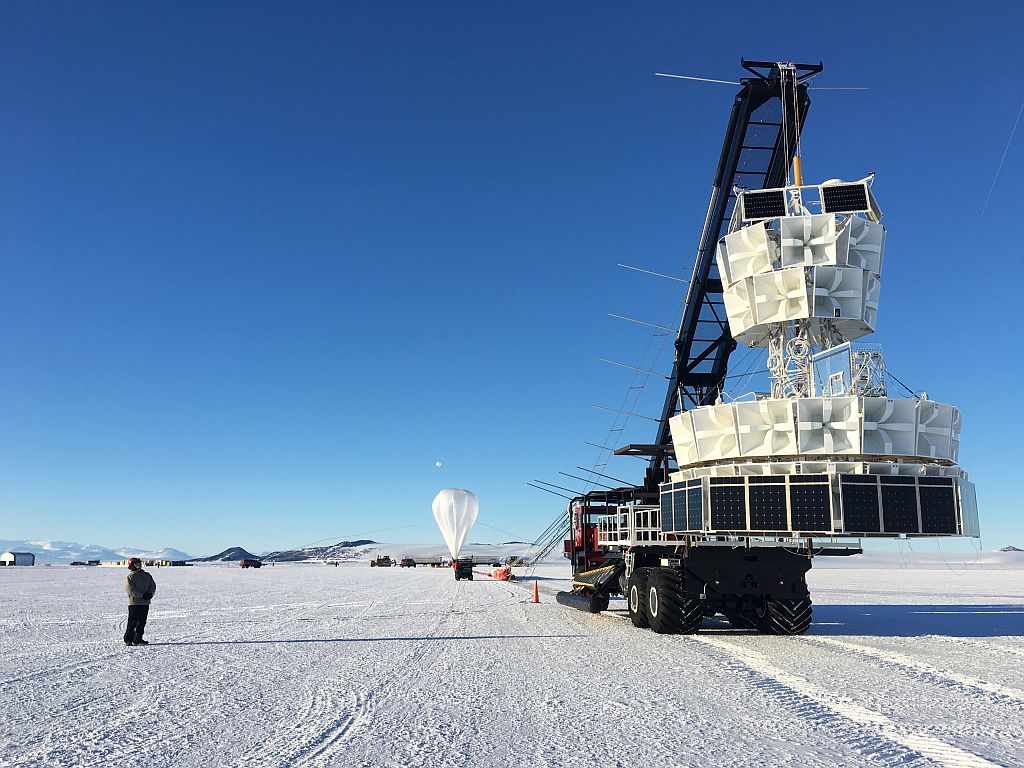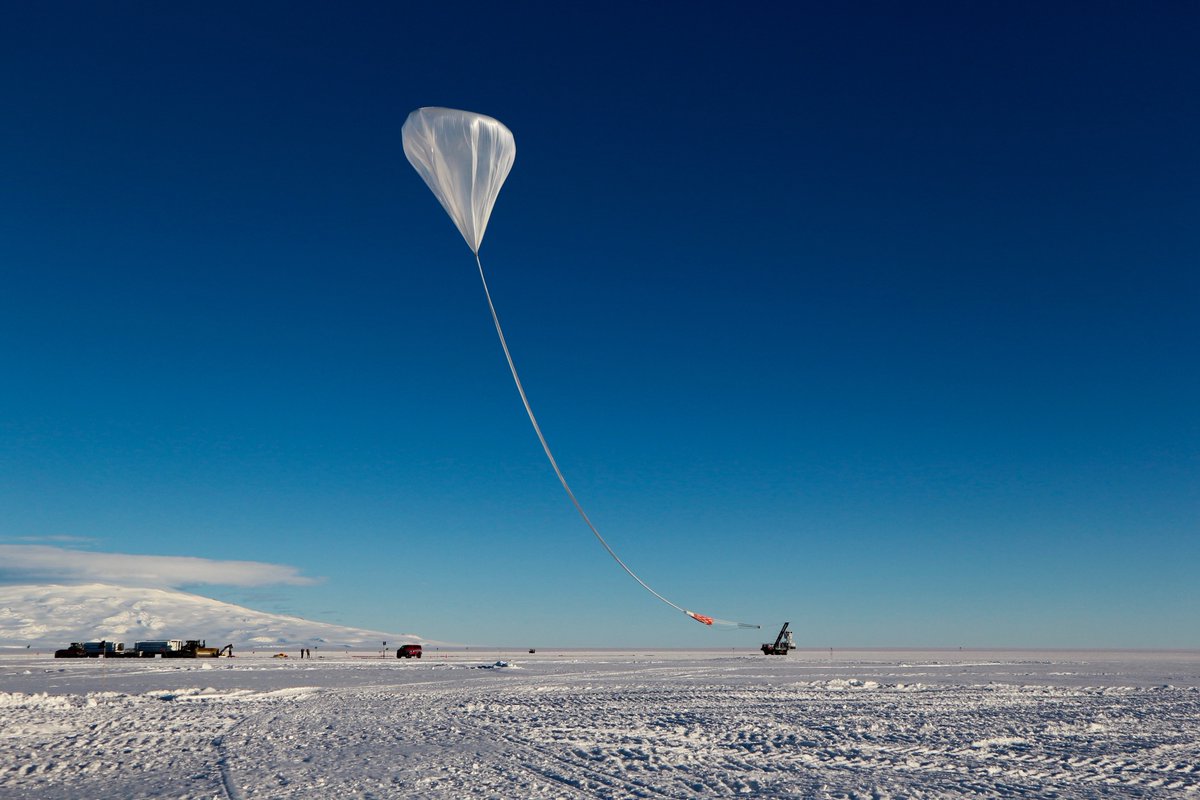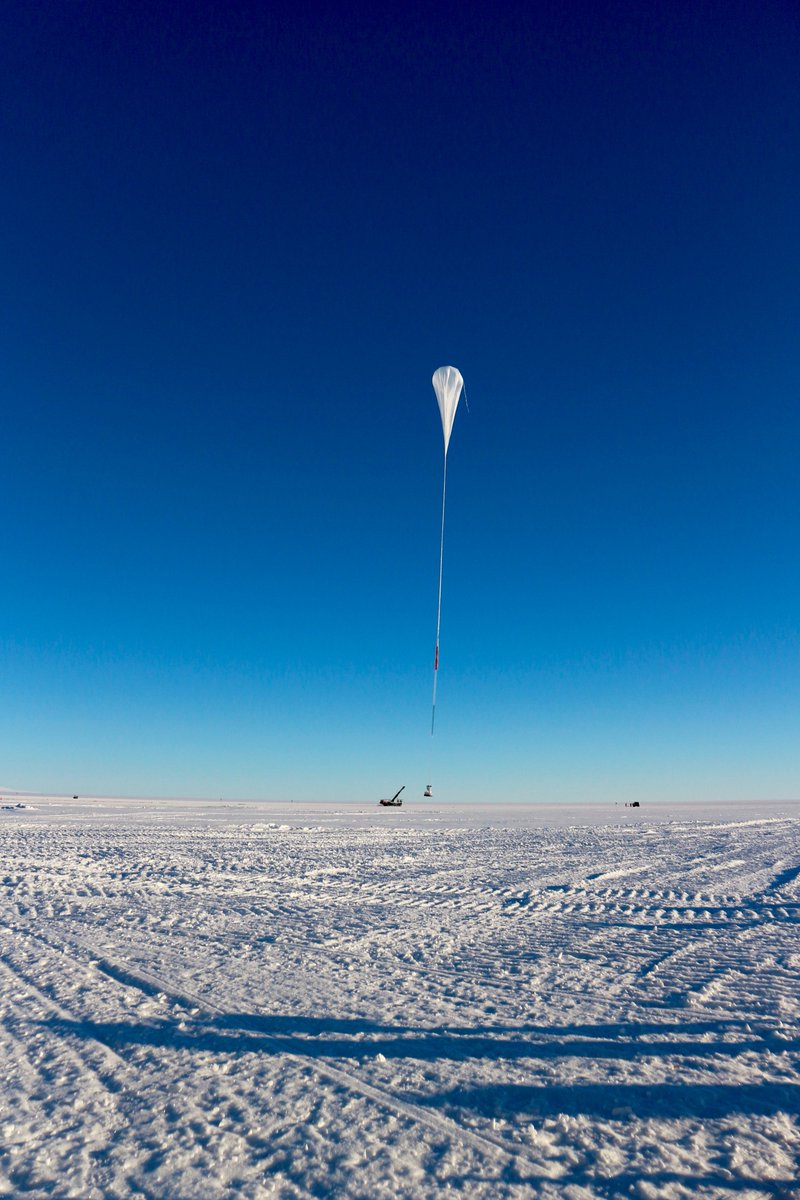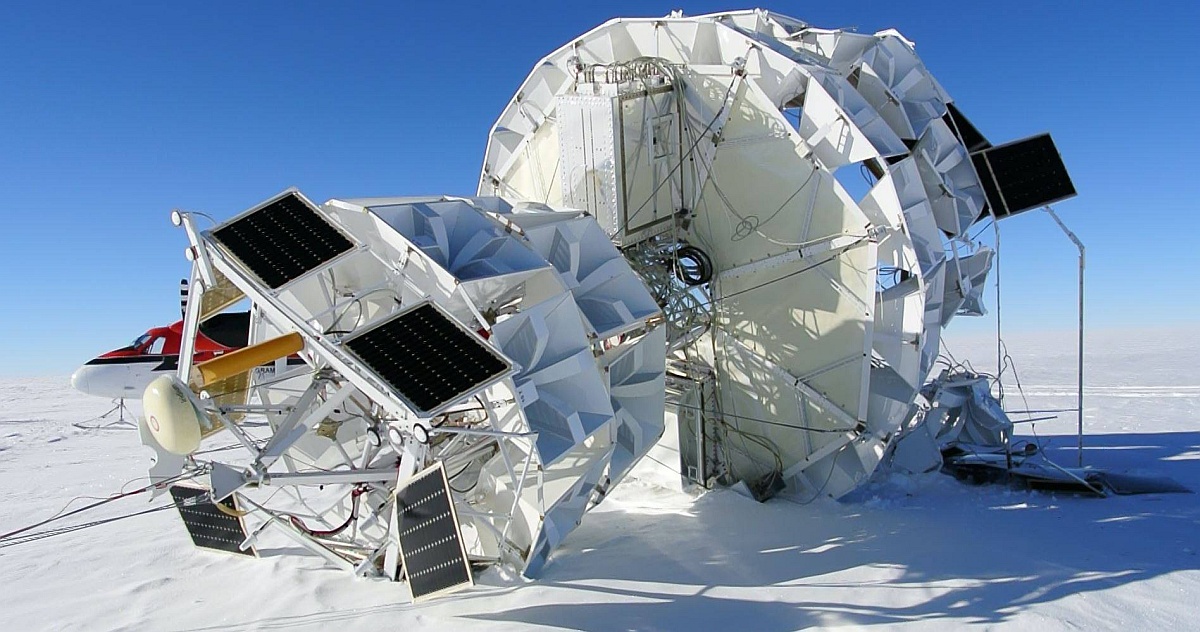Purpose of the flight and payload description
The instrument is a radio telescope to detect ultra-high energy cosmic-ray neutrinos from a scientific balloon flying over the continent of Antarctica. It will be the first NASA observatory for neutrinos of any kind.
Neutrinos are of great interest to astrophysicist as they are the only particle that can reach earth unattenuated at all energies. This is particularly of interest at high energies where other particles and photons will interact with the photons of the microwave background making them unable to propagate and survive over long astrophysical distances. In other words, if the scientists want to see the ultra-high energy universe, they should view it through the "light" of neutrinos.
The ANITA instrument detects these ultra-high energy neutrinos by use of the Askaryan effect. This effect predicts the production of a coherent radio emission from the cascade of particles produced in a high-energy particle interaction. In other words detecting a 'snap' in the radio frequencies caused by the interaction of the ultra-high energy neutrino.
In order to detect this radio emission (Askaryan pulses) it's needed a radio transparent medium for the interaction to occur in - and lots of it since these interactions are rare. Some materials that are radio transparent are salt, sand and ice. Also needs a fairly radio quiet area as the Askaryan pulses are very faint signals.
The ANITA instrument was designed to fly over the continent of Antarctica - the location of some of the most pure ice in the world as well as one of the most radio quiet spots on earth. Flying at 120,000 ft (~ 37 km) the instrument can observe ~1.5 million square kilometers of ice. However Neutrinos are so rare that with a detection area that large the scientists don't expect to see more than a hundred or so events.
Video footage of the launch and description of ANITA
Details of the balloon flight
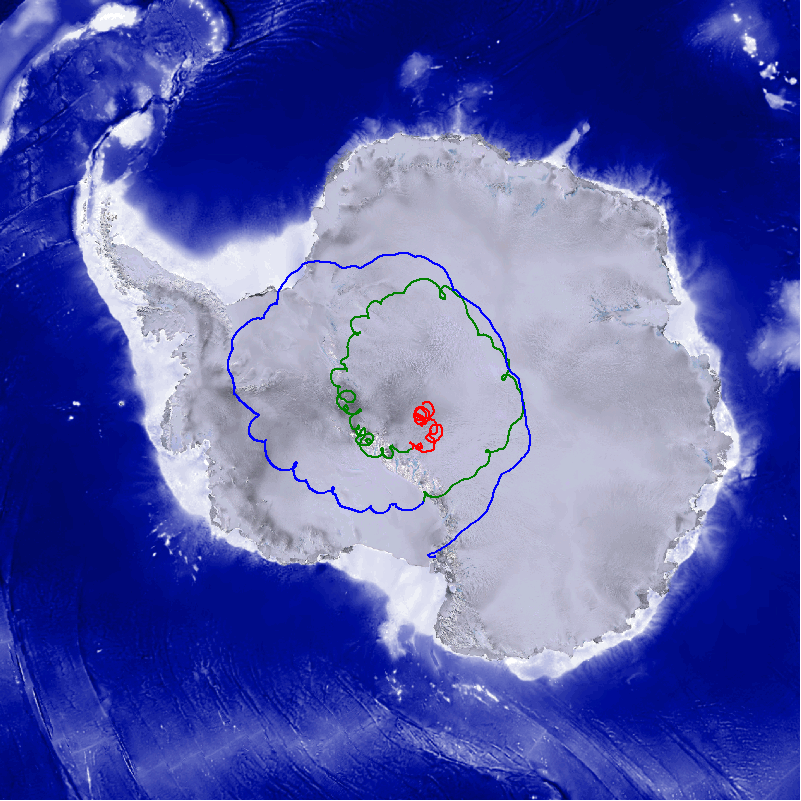
Balloon launched on: 12/2/2016 at 13:11 utc
Launch site: Williams Field, McMurdo Station, Antarctica
Balloon launched by: Columbia Scientific Balloon Facility (CSBF)
Balloon manufacturer/size/composition: Zero Pressure Balloon Raven - 39.570.000 cu ft - (0.8 Mil.)
Flight identification number: 675N
End of flight (L for landing time, W for last contact, otherwise termination time): 12/30/2016 at 5:30 utc
Balloon flight duration (F: time at float only, otherwise total flight time in d:days / h:hours or m:minutes - ): 27 d 16 h 52 m
Landing site: Near the Amundsen-Scott base in the south pole
The balloon was launched by dynamic method at 13:10 utc on December 2, 2016 being nomenclated as mission 675N. After a nominal ascent of near four hours, it reached float altitude of 130.000 ft starting as usual an anticyclonic path around the pole.
The balloon completed two full circles to the Antarctic Plateau and was in the middle of the third when the mission was terminated. The payload was separated from the balloon around 5:30 utc on December 30, landing at a site near the Amundsen-Scott base, totaling 27 days, 16 hours and 52 minutes of flight.
External references
- ANITA website University of Hawaii (Mauna Loa)
- ANITA-IV mission launced from Antarctica on December 3rd 2016 Leung Center for Cosmology and Particle Astrophysics News
- Characterization of Atmosphere-Skimming Cosmic-Ray Showers in High-Altitude Experiments Journal of Cosmology and Astroparticle Physics, Volume 2024, Issue 07, id.065
- Jim Beatty in Antarctica recovering ANITA-IV payload Ohio State University News
13161If you consider this website interesting or useful, you can help me to keep it up and running with a small donation to cover the operational costs. Just the equivalent of the price of a cup of coffee helps a lot.

